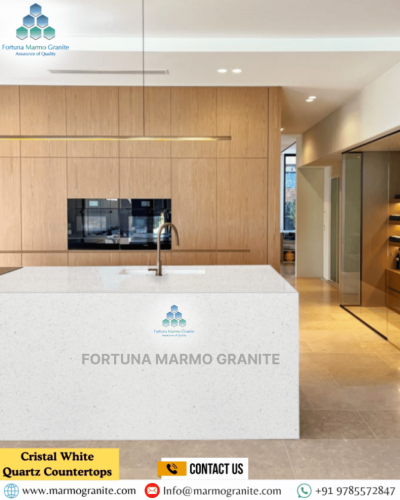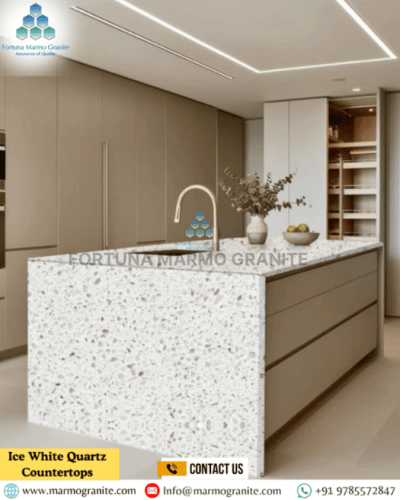The Ultimate Quartz Slab Size Chart: Find the Right Dimensions for Your Dream Kitchen
The Ultimate Quartz Slab Embarking on a kitchen renovation or designing a new culinary space is exciting but can feel overwhelming. In addition, Every decision can affect the look, feel, and functionality of your kitchen. Among these choices, selecting the right countertop material and determining the perfect size is crucial.
Moreover, Quartz has become a popular option due to its durability, longevity, and low maintenance. Consequently, Homeowners choose it for both style and practicality. Its non-porous surface and resilience make it ideal for high-traffic areas like kitchens.
In addition, Understanding the available quartz slab sizes can be confusing. Yet, Large islands, compact countertops, and unique layouts all require careful planning. This guide breaks down quartz dimensions to help you make informed decisions for your kitchen design.


Understanding the Basics: What is a Quartz Slab?
Moreover, Before diving into the specifics of sizes, let's establish a clear understanding of what a quartz slab actually is. Unlike natural stone slabs that are quarried directly from the earth, quartz slabs are engineered materials. They are created by combining approximately 90-95% ground natural quartz with 5-10% resins, polymers, and pigments. In addition, This manufacturing process allows for greater control over color, pattern, and consistency, as well as the ability to produce slabs in specific dimensions.
Yet, These slabs serve as the raw material from which your countertops, backsplashes, and other surface applications are cut and fabricated. The size of the slab you choose will directly impact the number of pieces that can be yielded, influencing seam placement, material waste, and ultimately, the overall cost of your project.
Standard Quartz Slab Sizes: The Common Dimensions
Beyond Standard and Jumbo: Exploring Other Size Variations
Yet, While standard and jumbo slabs are the most common, some manufacturers may offer other size variations or even custom sizes in certain circumstances. These might include:
- Smaller Slabs or Cut-to-Size Options: Additionally, For very small projects like powder room vanities or bar tops, some suppliers might offer smaller pre-cut pieces or allow you to purchase a portion of a larger slab. In contrast, This can be a more economical option for smaller applications.
- Extra-Large Jumbo Slabs: Moreover, Occasionally, manufacturers may introduce even larger "super jumbo" slabs, exceeding the dimensions of typical jumbo slabs. Yet, These are particularly beneficial for very high-end projects with exceptionally large surface areas.
Always inquire about the full range of sizes available from your supplier to explore all possibilities for your project.
Thickness Matters Too: Complementing Size with Depth
guide primarily focuses on the length and width of quartz slabs, it's crucial to remember that thickness is another critical dimension to consider. Consequently, Quartz countertops are typically available in the following thicknesses:
- 2 cm (approximately ¾ inch): In contrast, This is a common thickness for backsplashes, vertical applications, and sometimes for countertops with adequate support. It offers a sleek and thinner profile.
- 3 cm (approximately 1 ¼ inch): Consequently, This is the most popular and standard thickness for kitchen countertops. For instance, It provides a substantial and durable feel and is often preferred for its structural integrity and aesthetic presence.
- Occasionally, you might find 1.2 cm or thicker options for specialized applications.
Subsequently, The thickness you choose will influence the edge profiles that can be applied and the overall look and feel of your countertops. Consider the aesthetic you desire and the structural requirements of your kitchen design when selecting the thickness.
Navigating the Quartz Slab Size Chart: A Practical Guide
| Slab Type | Approximate Length (inches) | Approximate Width (inches) | Approximate Length (cm) | Approximate Width (cm) | Ideal For | Key Benefit |
|---|---|---|---|---|---|---|
| Standard Slab | 120 | 55 | 305 | 140 | Smaller kitchens, perimeter countertops, smaller islands | Generally more readily available and often more cost-effective per slab. |
| Jumbo Slab | 130 | 63 | 330 | 160 | Larger kitchens, large islands, waterfall edges, long countertops | Reduces or eliminates seams, better pattern continuity for large surfaces. |
| Smaller/Cut-to-Size | Varies | Varies | Varies | Varies | Small projects (vanities, bar tops), minimizing waste for small areas | Economical for small applications. |
| Extra-Large Jumbo | >130 | >63 | >330 | >160 | Very large kitchens, expansive seamless surfaces | Maximum seamlessness for grand designs. |
Real-World Examples: Matching Slab Size to Kitchen Design
Small Galley Kitchen: Moreover, A compact galley kitchen with straight countertop runs can often be covered with a standard-sized slab. Careful templating is essential to maximize material yield.
Kitchen with a Medium-Sized Island: In addition, A medium-sized island (around 60 × 36 inches) with perimeter countertops may benefit from a jumbo slab. This allows a seamless island countertop and fewer seams along the longer runs.
Large Open-Concept Kitchen with a Waterfall Island: Yet, For a spacious kitchen with a waterfall island, a jumbo slab is ideal. Eventually, Its extra length and width allow the material to flow continuously down the island sides, creating a dramatic, seamless look.
Budget-Conscious Renovation: In contrast, When working on a tight budget, standard-sized slabs Subsequently, with strategic seam placement offer a cost-effective solution. Consult your fabricator to plan the most economical layout.
Conclusion
Moreover, In conclusion, choosing the right quartz slab size is an essential step in ensuring that your kitchen design is not only aesthetically pleasing but also functional and durable. Yet, The Ultimate Quartz Slab Size Chart By understanding the various slab sizes available, you can make informed decisions that align with your vision for your dream kitchen. Whether you're working with a large open space or a more compact area, In addition, the right quartz slab dimensions can enhance both the beauty and practicality of your countertops, backsplashes, and islands.
Indian Granite Supplier At Fortuna Marmo Granite, we take pride in offering a wide range of premium quartz slabs with customized sizes, ensuring that you find the perfect fit for your kitchen design needs. In contrast, As leading suppliers and exporters of high-quality natural stones, including quartz, Yet, Moreover, The Ultimate Quartz Slab Size Chart we are committed to providing exceptional service, expert guidance, and the finest materials that will transform your kitchen into a stunning and functional space. In addition, Let us help you bring your kitchen vision to life with the perfect quartz slab size, tailored to your exact requirements.

